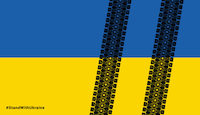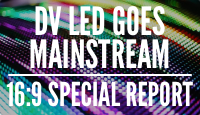
Vertiseit Acquires Visual Art; Fast Becoming One Of Europe’s Largest Digital Signage Solutions Companies
October 3, 2024 by Dave Haynes
Consolidation in the digital signage solutions market in Europe is continuing with word, this morning, that Vertiseit is taking over its Swedish competitor Visual Art, with the Stockholm-based company continuing to operate as an independent company under the Vertiseit umbrella.
The transaction was funded in multiple ways, the most interesting one being financing from Bonnier Capital, the investment wing of Sweden’s largest publishing house. The deal makes Bonnier Capital the biggest shareholder, at 18%, of Vertiseit.
The outcome has the number two and number three companies serving the digital signage market in the Nordic countries merging and Vertiseit now has a large European full service company, and three of its own software platforms. It also has significant annual SaaS revenues.
ZetaDisplay, also based in Sweden (Malmo) was the rated the digital signage market leader in Scandinavia, but with #2 and #3 combined, I’m thinking that might no longer be the case.
Vertiseit – think “Advertise It” and lose the Ad part – describes itself as “the leading platform company within Digital In-store in Europe. Through its subsidiaries Dise and Grassfish, the group offers SaaS platforms for In-store Experience Management (IXM) and related consulting services. The company’s customers include global brands and leading retailers with the ambition to enhance the customer experience with digital touchpoints in-store. This enables a unified customer journey by seamlessly connecting the digital and physical interactions.”
With Visual Art, Vertiseit now has the three CMS software solutions – which industry history suggests won’t be permanent. But if the three operate somewhat autonomously, maybe they will all be used and, somehow also compete. Dise and Visual Art are both mainly focused on retail, so that will be interesting.
The Bonnier side of this is also interesting, in theory, because of the diverse holdings of the family-owned company. The media company owns a pile of magazine and newspaper titles – including US ones like Popular Science and Field and Stream. Once again in theory, that’s potential content for screens.
My content partner friends at Munich-based invidis know the EU market FAR better than I do, so here’s how they are reporting this:
Even after the takeover, Visual Art will continue to exist as an independent company within the Vertiseit Group. The provider, headquartered in Stockholm, employs 120 people in eight countries, including a branch in Hamburg. Visual Art’s most important customers include McDonald’s, Subway, Kesko, ICA, 7-Eleven and Lego. Visual Art generates annual recurring SaaS revenue (ARR) of approximately EUR 6.62 million and manages approximately 75,000 software licenses in 39 countries . The company’s total revenue in 2023 was approximately SEK 345 million or EUR 30.44 million.
Two strong customer bases complement each other
Vertiseit – better known for its Dise and Grassfish platforms – also counts well-known brands among its customers, including Marks & Spencer, Lidl, Bosch, Vodafone, Volkswagen, Porsche and BMW. By the end of the second quarter of 2024, Vertiseit’s ARR amounted to the equivalent of 15.79 million euros, with annual organic growth of more than 20 percent.
With the takeover, Vertiseit is expanding its presence in Europe, particularly in the Nordic countries, Great Britain, the DACH region and Southern Europe. The new group of companies will also be active in North America through Visual Arts’ office in Chicago. In total, the combined company will employ around 270 people.
Increase in recurring revenue
The new group’s annual ARR will increase to the equivalent of EUR 22.41 million. This will support Vertiseits’ long-term goal of achieving an ARR of SEK 1 billion or the equivalent of EUR 88 million by 2032 and becoming a leader in digital in-store.
The acquisition was financed by a loan from Nordea Bank of SEK 225 million and a share issue worth approximately SEK 250 million. The founders and former shareholders of Visual Art are investing approximately SEK 50 million in Vertiseit by converting part of the purchase price into shares in the company. Also involved is the financial investor Bonnier Capital, which thereby becomes the new majority owner of Vertiseit.
Goal: “world’s leading platform company”
Johan Lind, CEO of Vertiseit, says: “We are very proud and excited to acquire Visual Art, a company with a strong brand and a fantastic team of skilled employees who have contributed significantly to the development of our industry.”
Above all, Johan Lind sees considerable value in Visual Art’s software. “Their award-winning Azure-based platform can be integrated into our backend platform IXM Grid, which accelerates our development pace.”
Together, they want to become a “world-leading platform company”.
Pontus Meijer, CEO of Visual Art, says: “Visual Art and Vertiseit share the goal of becoming the world leader in digital signage, enabling companies to reach their audiences through seamless communication and transforming the interaction between the physical and digital worlds.”
Visual Art will continue its development within the Vertiseit Group with an increased focus on software and distribution through partners.

Invidis graphic
Here’s what invidis principal Florian Rotberg, who is DEEPLY wired into the business in Europe and the Middle East, has to say on what and how this came together:
Visual Art was up for sale after Ocean Outdoor and early shareholders wanted to pull out. A stock market listing or a sale to strategic and/or financial investors were discussed. Many of the larger European digital signage providers also showed interest in a takeover. But as is so often the case in Scandinavia, Vertiseit won in the end. The well-connected, listed digital signage provider from near Gothenburg won the race for Visual Art and is taking over the integrator with its European subsidiaries in full.
Vertiseit CEO Johan Lind has been consolidating the Scandinavian digital signage industry in particular for over 10 years. With the eighth acquisition, the provider, founded in 2005, has grown from a small Swedish software developer to a globally relevant retail experience platform provider. Vertiseit became known in Europe with the acquisition of Grassfish in 2021 ( invidis report ). Since then, the acquisition of MultiQ from Malmö and now Visual Art have followed.
Wanderer between the worlds
Vertiseit sees itself neither as an independent software provider (ISV) nor as an integrator. With Grassfish, Vertiseit is active on the market as a retail experience platform provider plus concept and integration (ISV+); independent digital signage integrators are supplied with the Dise software platform. With the takeover of Visual Art, Vertiseit is now expanding its offering to include a full-service integrator with a leading CMS platform, content studio and retail media business.
For some Vertiseit customers, the takeover could be interpreted as crossing a red line, because with Visual Art, Vertiseit is now in direct competition with Dise partners. An integrator dilemma already known from Stratacache/Scala, when the important software supplier becomes a direct competitor for long-standing partners.
Vertiseit CEO Johan Lind is certainly aware of the potential conflicts of interest and will try to convince all partners of the advantages of the takeover. But the truth is that such perceived boundary crossings will happen more frequently in the market in the future. Tectonic shifts in the value chain, customer demand for large global platforms and the rapidly changing role of software can only be achieved through consolidation. The digital signage industry is growing up and disruptors like Johan Lind want to actively help shape the changes.
Focus on Recurring Revenue
Anyone who knows CEO Johan Lind knows about his laser-sharp focus on SaaS revenues and ARR revenues. The opportunity to take over Visual Art was too good to pass up on the competition. For just around 40 million euros, Vertiseit was able to acquire the Swedish integrator with an excellent software platform that generates more than 6.5 million euros in SaaS revenues (ARR) annually. With the takeover, Vertiseit is increasing its SaaS (ARR) revenues from around 15 million euros to 22 million euros. The ambitious medium-term goal is one billion SEK in ARR revenues – the equivalent of 88 million euros.
To finance the takeover of Visual Art, Vertiseit is relying on a combination of bank loans and newly issued shares. Part of the transaction is also the entry of the financial investor Bonnier Capital, which will become Vertiseit’s largest shareholder with 18 percent, ahead of CEO and founder Johan Lind, who held 8 percent of the company’s shares until the transaction. Bonnier Capital is the investment arm of Scandinavia’s largest publishing house, Bonnier.
For people who don’t know the EU market, the biggest players in terms of solutions providers focused on digital signage, are Trison from Spain and M-Cube from Italy, with Zeta or maybe now Vertiseit as #3.




Leave a comment